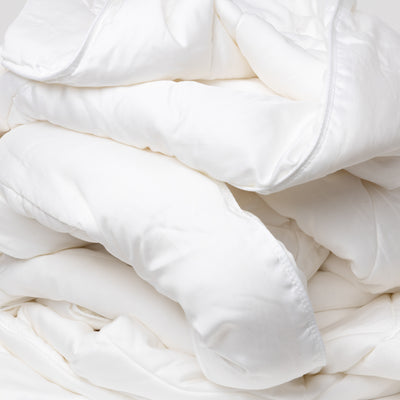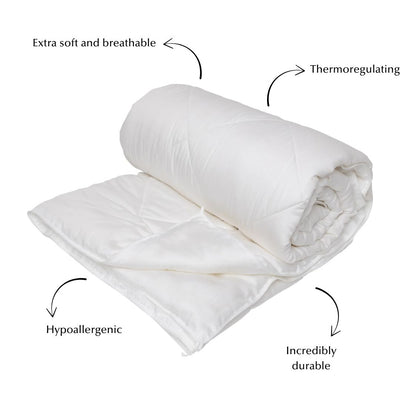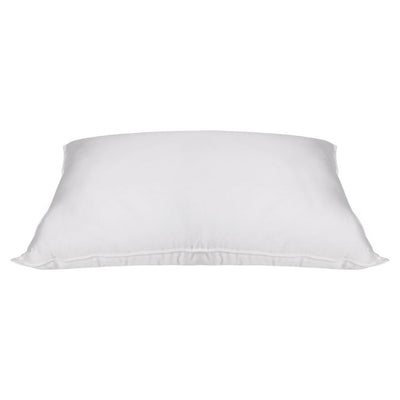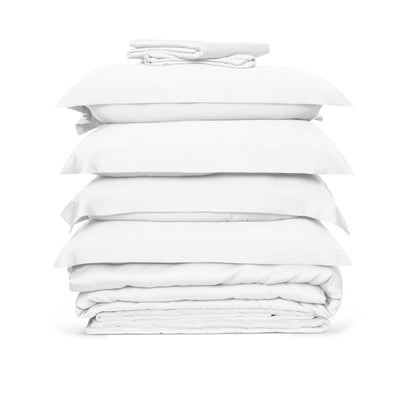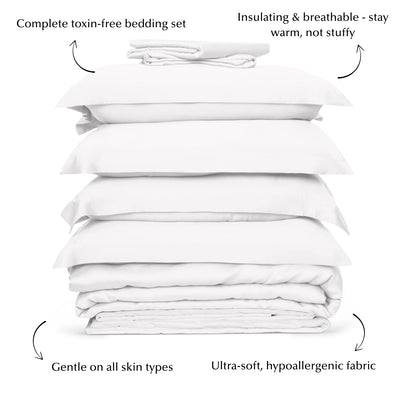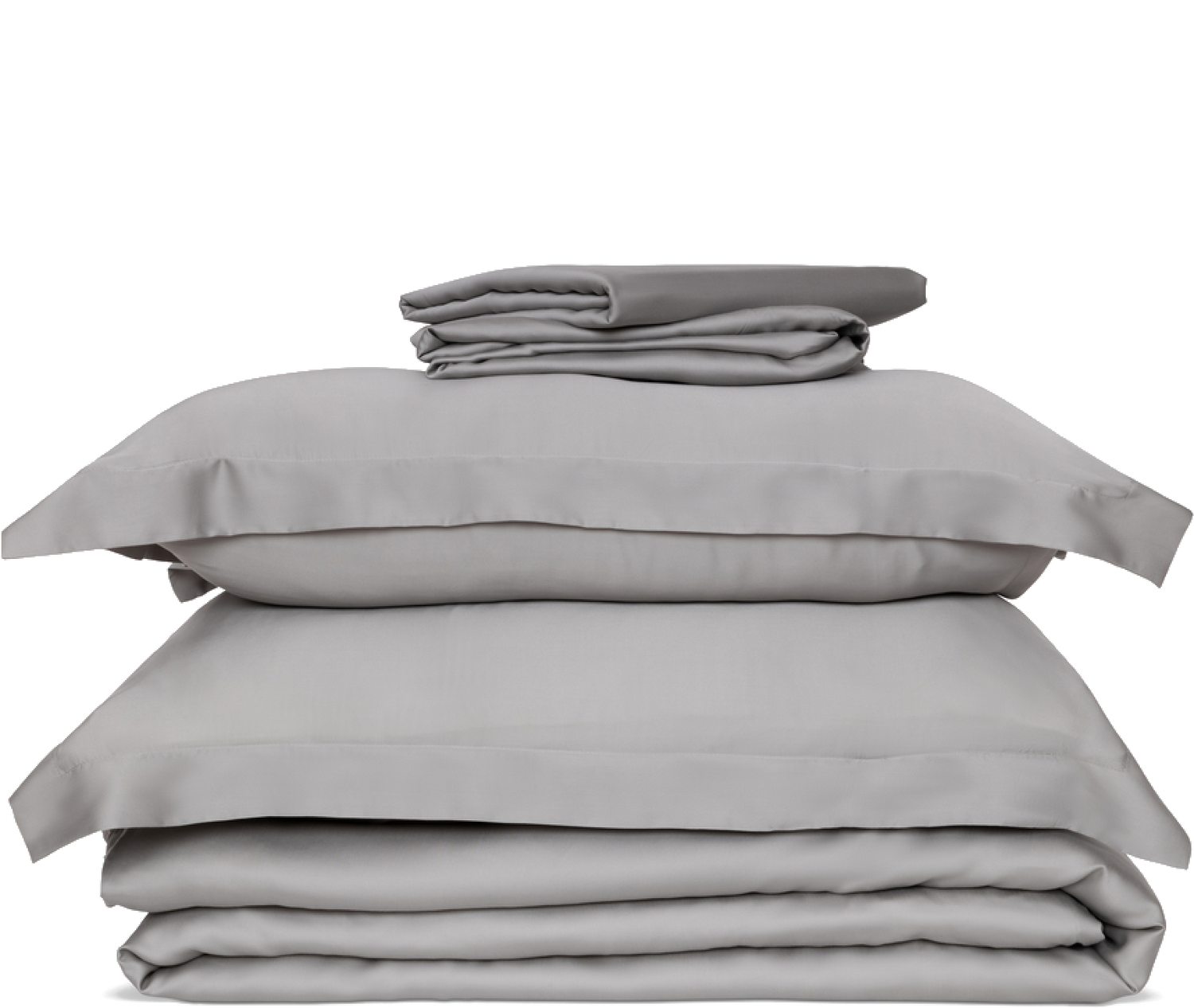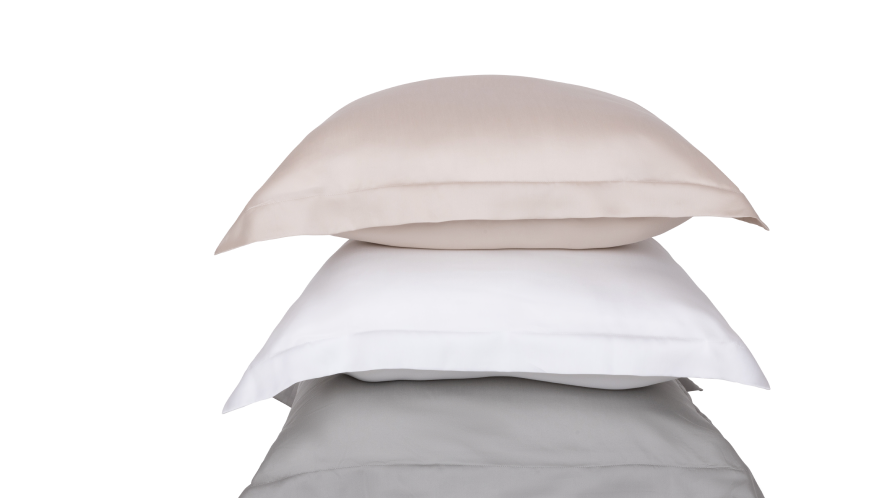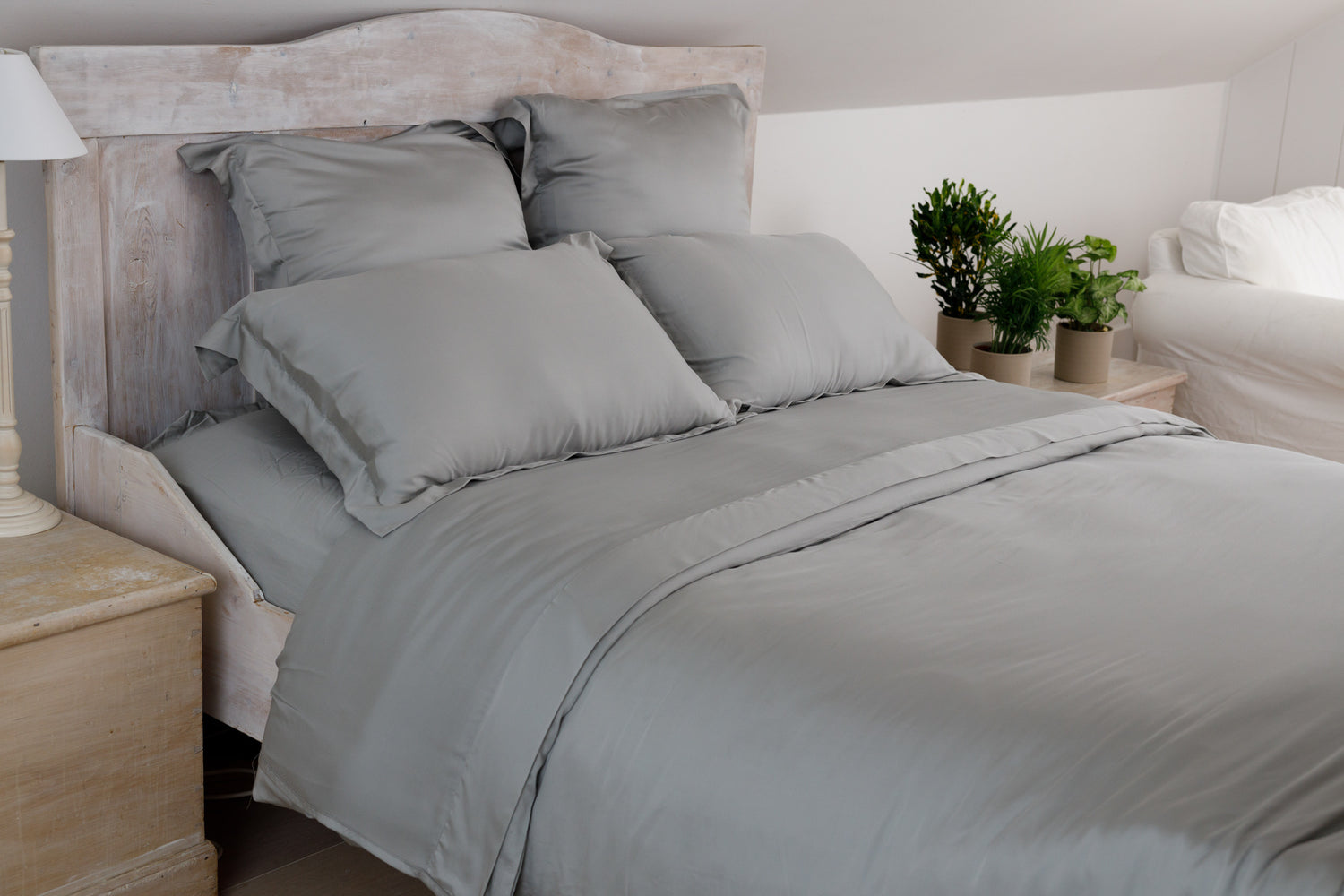You’ve likely heard of dust mites, the microscopic pest that live amongst your bedding, clothes, and upholstery – but what exactly are they, and how can you keep them under control?
In this article, we’ve explained what dust mites are, where they come from, and whether you should be concerned about their presence, as well as the ways to get rid of them and prevent them in the first place.
What are dust mites?
Put simply, dust mites – or house dust mites as they’re often known - are microscopic, insect-like creatures (generally only 0.2mm in length, and too small for the human eye) that typically live in hot and humid environments – this makes your bed sheets the ideal habitat, especially if you suffer from night sweats.
What you might be a little surprised to find out, though, is that they’re actually closely related to common house spiders and ticks. However, the good news is they don’t bite and thrive simply on human detritus like dead skin cells.
Where do house dust mites come from?
The thing about dust mites is… they occur naturally and appear in pretty much all homes. So, the reality is you’ve almost certainly already experienced them between your sheets without realising.
Specifically, they thrive in your pillows, mattress, and blankets, though they’re also known to enjoy living in stuffed toys, carpets, clothes, and upholstered furniture. Essentially, any area or surface that may get warm and house dead skin particles.
Should I worry about dust mites?
First and foremost, house dust mites are found in all homes, so are extremely common. As a result, there’s no immediate or serious need to worry about having them.
However, while dust mites don’t bite, sting, nor physically attack you, that’s not to say they don’t pose any threat to your long-term health and wellbeing. Most notably, they’re famed for contributing and exacerbating indoor allergies, whether that’s coughing, sneezing, or itching.
This is generally caused by the allergy-inducing proteins found in their faeces, which, while largely harmless, can trigger a reaction in between 5-30% of the general population – though, this figure naturally rises if you’re in a vulnerable category, such as having asthma.
Allergy symptoms from house dust mites
As highlighted, dust mites are most commonly known for causing and triggering allergies and reactions. The most common of which include:
- Itchy skin and rashes
- Sneezing and a running nose
- Nasal congestion and a stuffy nose
- Watery and itchy eyes
- Swollen sinuses
- Shortness of breath or wheeziness
As you’ve likely realised, mites essentially trigger all the most common allergies, which can make it difficult to assess whether you’ve got mites or are simply suffering from seasonal reactions.
However, there are a few subtle ways to distinguish between the two. For example, if you’ve become sneezy, check the colour and texture of your mucus: if it’s thick and yellowish, you likely only have a cold. That said, if you’re in any doubt, do your research and reach out to experts, as, if left untreated, you may develop asthma or eczema over time.
What does dust mite rash look like?
Perhaps one of the more serious symptoms of having mites; you may experience something called a dust mite rash. Sometimes mistaken for bites, a mite rash can result in red skin around the affected area, as well as small white bumps and spots.
As well as the visual discolouring and bumpy texture, dust mite rashes are also often accompanied by itching and swelling. Fortunately, this isn’t anything to worry about, so long as you recognise the presence of mites and act. However, if left untreated, you run the risk of a bacterial infection, as well as the increasing chance of long-term skin or respiratory issues.
How to det rid of dust mites in sheets
Bed sheets are a hotspot for dust mites, thanks to the warm and humid environment and abundance of dead skins cells you shed each and every night.
However, it goes without saying that they’re an unwelcome guest, and it’s only natural to want to get rid of them – otherwise, they’ll spread and multiply until your home is infested!
You can eliminate dust mites in four simple steps:
- Remove and change all of your bedding
- Wash your bedding (on a hot cycle)
- Put your bedding in the dryer (or hang in the sun)
- Vacuum the sheets
If you notice bed dust mites, it’s essential to put your current sheets, duvet cover, and pillowcases in the washing machine immediately, before fitting new, fresh bedding.
Washing your sheets will kill the mites currently living in your bed, while throwing your bedding in the dryer makes doubly sure that none sneak through the cycle! Finally, vacuuming your sheets with a little baking soda will collect any remaining, stubborn allergens.

Discover Our Fitted Sheet (Eucalyptus Silk) - Available In A Range Of Colour & Sizes
How to prevent dust mites in bedding
We’ve looked at how to combat mites if you find they’ve already taken over your bedding, but it’s important to be aware of dust mite prevention methods to reduce the risk of future infestation. We’ve identified six simple ways you can prevent dust mites in your home.
1. Use dehumidifiers and air purifiers
It’s no secret that dust mites love a hot and humid environment, so one way of preventing them from breeding is by monitoring and controlling the humidity levels of your bedroom.
Using a dehumidifier or air purifier, you can make your bedroom cool and comfortable, and eliminate the risk of a mite infestation. When choosing your settings, just make sure to keep humidity levels below 60%, to create an inhospitable mite environment.
2. Avoid carpet and rugs where possible
As previously highlighted, dust mites love living anywhere that collects dead skin cells, with carpets being a feasting ground for fallen flakes.
Wherever possible, if dust mites are a concern and you’re worried about the allergenic repercussions, consider alternatives to carpet, such as wooden flooring or tiles. If this isn’t an option, it’s important to give your carpets a deep clean at least once a year using anti-allergy treatment (as well as hoovering regularly).
3. Keep your room dust-free
Regularly cleaning and decluttering your bedroom is a great way of ensuring your space remains free of dust mites – or at the very least keeps them at bay! You might not realise just how much dust collects on your belongings, so giving them a going over with a duster every week or so will stand you in good stead.
Once you’ve cleaned and decluttered, be sure to following up with a thorough vacuuming to collect any remaining mites and allergenic faeces, before repeating the cleaning and vacuuming process inside your wardrobe and underneath your bed.
4. Choose natural room spray
If you’re concerned about the return of dust mites, a practical precaution is to regularly fill your room with fragrant spray or essential oils that include compounds that repel the bugs. For instance, consider products that include cloves, rosemary, or eucalyptus oil, or any other spray that’s hypoallergenic or known to combat dust, mites, and mould.

Reimagine Your Bedroom Space With Our Room Spray - £19
5. Keep pets away
Dust mites thrive when there’s an abundance of dead skin cells for them to feast on, so letting your pets in the bedroom just provides even more dander. With this in mind, to prevent dust mites from settling, it’s a good idea to keep your living area and bedroom separate and keep your bed a human only zone!
6. Choose hypoallergenic bedding
Finally, a long-term and efficient solution, if you’re struggling with regular dust mite infestations, is to invest in high-quality, hypoallergenic bedding, made using organic materials that wick the moisture away as you sleep.
An excellent example of a temperature-regulating and moisture wicking bedding material is eucalyptus silk, which is naturally resilient to dust, mites, and mould, to create a cosy and comfortable sleeping environment.
Hopefully, you now feel completely clued up on dust mites and their impact on your skin and respiratory health, and confident that you’re able to get rid of them!
In the meantime, if you’re interested in learning about choosing high-quality bedding, get in touch with our team of sleep experts. Or for further interesting insight, such as how to get yellow stains out of bed sheets, head on over to the Ethical Bedding blog.
